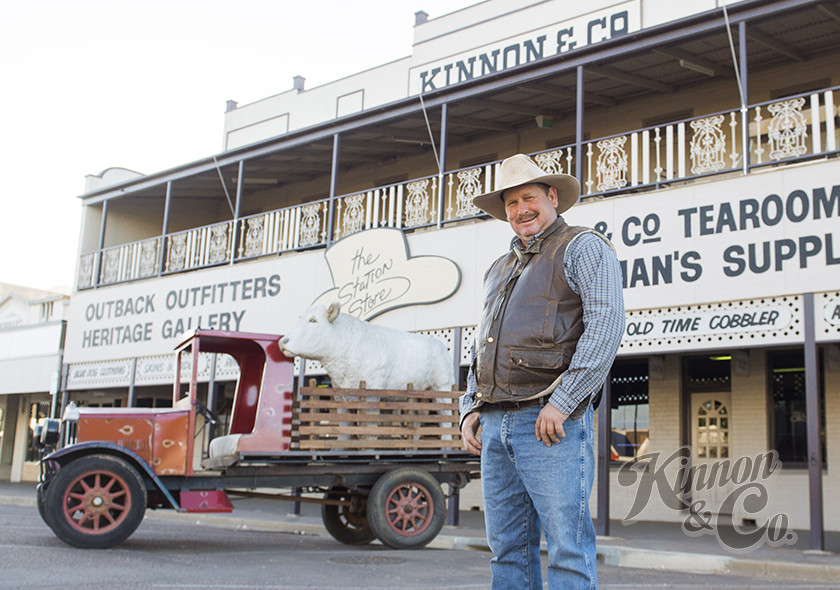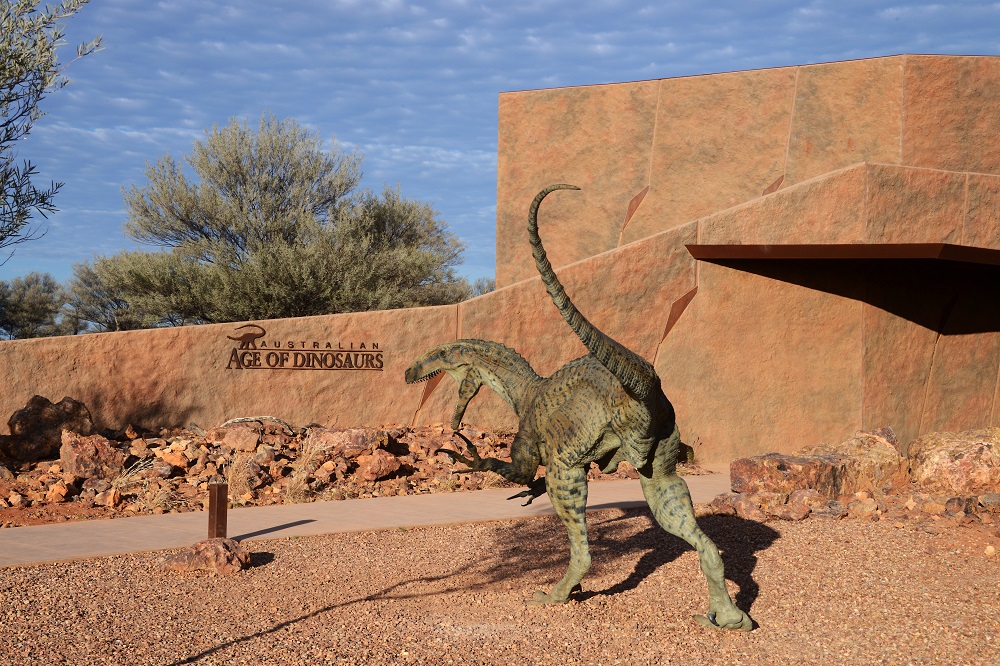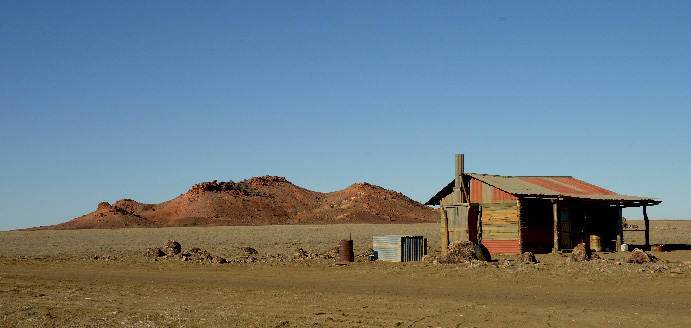It’s where rain discriminates and bones litter a cracked orange earth; where clouds are wispy, then they’re gone; where one might safely assume the word ‘unforgiving’ was forged, because this land – the outback, western Central Queensland – gives ‘unforgiving’ definition and clout.
Yet despite its burnt terrain and sometimes-intimidating openness, it strikes as an incredibly happy place, where the people are generous with their smiles and, well, anything else they can offer you, truly. If you’ve never walked on a cattle station, asked for a beer in a small town’s pub or bar – possibly the only drinking establishment in a 100km radius – or enjoyed some banter with the locals, then it’s time to begin planning a trip. You can start by counting your carriages. (You’ll understand soon!)
Spirit of the Outback
Most Australian states and territories are bigger than a handful of European countries thrown together – we know this, and the Sunshine State fits this description perfectly. To reach western Central Queensland, you could possibly drive. You would want – no, absolutely require – a vehicle that’s up for a challenge, a spare tyre or two, plenty of water, snacks, good reception (and a phone reliable enough to pick it up), a special transmission device for when you inevitably don’t have reception, and maybe a few more items of your choosing. Or you could take a more leisurely, romantic approach to it, by booking a ticket on the Spirit of the Outback, which begins its journey in Brisbane and reaches its final destination, Longreach, roughly 25 hours and a whole lot of orange dirt later.
Covering a total distance of 1325km, the train follows the coastline, stopping every few hours, all the way up to Rockhampton, before turning 90 degrees to the left to chase the sun west. Consisting of 11 carriages, passengers have a choice of three different carriage types: economy seats, economy single sleepers, and first class sleepers. First class passengers have a hearty breakfast, lunch and dinner included in the package, making travel enjoyable, delectable and surprisingly fresh. Food is served in The Tuckerbox Dining Car, where you will be served your meals and drinks by the train’s all too-happy-to-help staff.
Once on board, be prepared for narrow hallways and the occasional bump as the train curves on the track. When headed to the bathroom, dining car, or Shearer’s Rest (for a break from your accommodation), ensure you count your carriages: the first class cabins appear much the same as you traverse the slender hall, and you don’t want to embarrass yourself by asking staff members why your key to room six won’t work, when really, you’re in room six in the next carriage. Also, don’t be surprised when you disembark and find yourself swaying – it’s like getting off a boat.
A constellation of towns
Outback towns are few and far between. An hour’s drive to the next town feels like a relatively short trip when you consider that the next town beyond that might be a further two or three hours spent in the car. That said, a trip to the outback is not complete without visiting a handful of charming, hard-worn country towns, if only to witness the hundreds of thousands of acres of parched cattle stations, kangaroos (dead and alive), the odd emu, and – to the sky – circling black kites. That these animals have adapted to thrive in this harsh environment is a testament to nature’s power. Furthermore, that humans have survived out here for thousands of years is equally as astounding. Today, like the animals, these towns continue to adapt – and, it seems, mostly in an effort to show us, as tourists, their faraway beauty.
Cracking whips and jokes, the landlocked individuals of western Central Queensland are hard to forget.
Longreach
If you elect to travel by train, Longreach is where the journey both ends and begins. With a population of just over 3000, it’s far from being the smallest town in the outback. In fact, the locals lovingly refer to it as the ‘heart of Queensland’ – which, to look at on a map, it is. It’s smack in the centre. Wonderfully, there is a lot to do in Longreach, not least of all a tour of the fantastic Qantas Founders Museum which, thanks to the enormity of their Boeing 747, you’ll spot a mile off as you approach the town. The people operating the museum are astounding individuals – their knowledge of and approach to their work alone makes it worth visiting. And, as CEO Tony Martin points out, it’s proudly and contentedly done without any financial support from Qantas. This year, the museum turns 20.
While the museum and a tour of the jets will kill a few hours, the best way to fill your days in Longreach is by visiting the Kinnon family. Specifically, you could look at staying in their freshly renovated accommodation. Kinnon & Co offer two types of rooms, both of which are rustically themed, but modern, practical, and comfortable. Aside from offering a place to rest your head and fry some bacon, the Kinnons also offer experiences to be found nowhere else on the planet. To be more precise, grab a hat and your sunglasses and sign up to a ride on the Cobb & Co Stagecoach Tour, the only place in the world licensed to give you a ride on a five-horse-pulled stagecoach. It’s exactly as it would have been a century ago, and in doing it, history comes to life. It’s a 45-minute, award-winning experience and once you’ve done it you’ll understand why.

Outside of the Kinnon family’s offerings, there is the Stockman’s Hall of Fame and the Outback Heritage Centre, another must for any city slicker. Here, the opportunity to watch a real live stockman crack his whip, explain and demonstrate how to break a horse, herd sheep and more is presented. Before you reach the show ground, however, you’ll pass through the museum, a timber, stone and corrugated iron structure that from the inside feels a little like a hangar. There’s even a small prop plane hanging from the roof! The museum concisely details the history of Longreach, recognising indigenous culture and the native peoples’ important role in agriculture, the Royal Flying Doctors Service, and artifacts symbolic of the region’s pioneering history. Together, there are over 1200 items in the centre, each one telling a story.
By late afternoon, you can escape infrastructure altogether and take a cruise tour on the Thompson River, which forms part of the Lake Eyre Basin. Without rain, this river recedes by up to four metres annually, but that’s normal for a system that never actually makes contact with the ocean. Yes, this water source begins and ends on land.
Dust, dirt & drovers
Cracking whips and jokes, the landlocked individuals of western Central Queensland are hard to forget – as if you would want to forget them anyway! Authentic without embellishment, the drovers, stockmen, farmers, tourism facilitators and everyone in between, they have a tendency for telling tales and a passion for quality entertainment. Or at least it seems that way, when you’re visiting from a place where eye contact is often avoided and public small talk is unwanted.
WINTON WONDER-LAND
Winton is a much smaller town to the northwest of Longreach, and with roughly a third of the population. However petite, it’s a huge location in Australia’s history books, given that the North Gregory Hotel, situated on the town’s main street, is where A.B. “Banjo” Paterson first performed the iconic Waltzing Matilda.
Here, the pastures (at least at the time of writing) are only marginally greener than those of its southern neighbour. But as a tour guide informed, a station just 15km outside of Winton received almost twice as much rain as Winton during the wet season – the sky, she sure is choosy, and the people are strong to resist succumbing to the frustration this can evoke. Instead, land owners have become innovative, capitilising on the prizes this drought-stricken land has to offer regardless of rain. They’re taking advantage of the prehistoric past.

A visit to Winton mandates booking yourself into a tour of (or at least hiring a car to visit) Lark Quarry, about 20km west. It’s the site of a 95-million-year-old dinosaur stampede (the only known one in the world) with all the footprints to prove it. Here, compare your foot to that of a large, carnivorous therapod’s, and hear engaging theories as to how the stampede played out.
From there, head to the top of a mesa, an isolated flat-topped hill known by locals as a ‘jump-up’, where the Australian Age of Dinosaurs rests, along with a laboratory where you can sign on to the ‘Prep A Dino’ program. It is in this lab that bones big and small sit on shelves, sealed in plaster of Paris, waiting to be properly and meticulously cleaned of the earth adhered to them. A guide explains that three weeks dig per year unearths five-to-ten years worth of work – hence why digging only occurs for such a brief spot. To register for the annual dig, there is a two-year waiting list – it make sense, given the uniqueness of the experience.
As Australian Age of Dinosaurs founder David Elliott says, “if you put Winton next to Brisbane, ‘… no would would visit, just like if you put Uluru next to Sydney Harbour. It’s seeing it, feeling it and experiencing it”.
Barcaldine & Lara Wetlands
Pinning down exactly why Barcaldine is special isn’t easy. It’s everything about the place. History has been retained so well, and it’s evident in the shopfronts and the fact that the local cinema, the authentic Barcaldine Radio Theatre, still operates on Friday and Sunday nights. The town also has the advantage of being in close proximity to the Lara Wetlands, a gorgeous camping ground located on the Lara Station property. Surprisingly fly-free, here you can submerge yourself in the relaxing hot spring, the water supplied naturally by the Great Artesian Basin, which goes as deep as 2000m. Even on a hot day, the thermal pool feels good, but if it’s cool you want, well, there’s one of them too. By night, enjoy a campfire and stargazing, or revel in the wonder of a truly silent night.
That these animals have adapted to thrive in this harsh environment is a testament to nature’s power. Furthermore, that humans have survived out here for thousands of years is equally as astounding.
Visit www.the-retiree.com.au to see a photo diary of the journey.
For more information on the Queensland outback, head to outbackqueensland.com.au.






















Add Comment